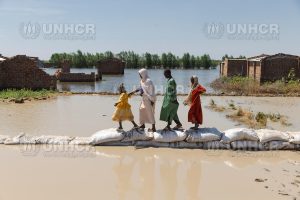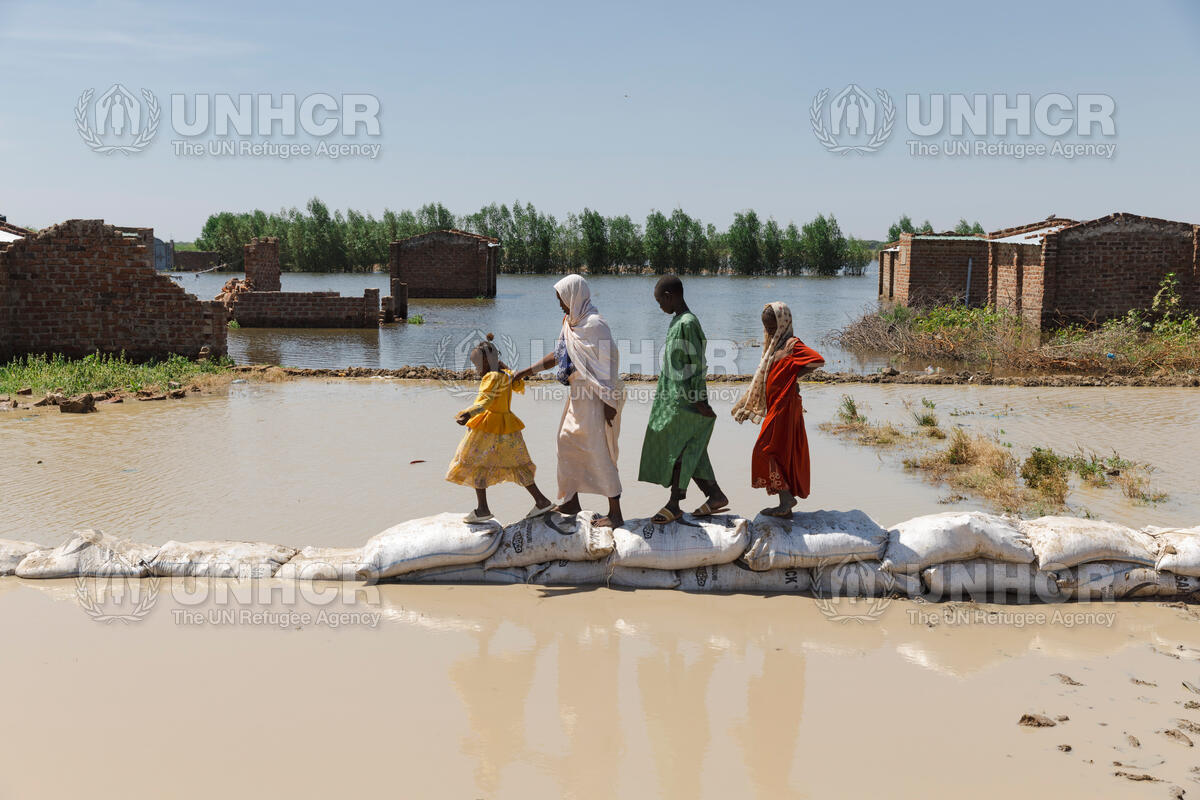
Belem, BRAZIL – Millions of refugees, people forced to flee, and their hosts are trapped in an increasingly vicious cycle of conflict and climate extremes, according to a new report released today by UNHCR, the UN Refugee Agency.
The report warns that climate shocks are undermining chances of recovery, increasing humanitarian needs, and amplifying the risks of repeated displacement.
By mid-2025, 117 million people had been displaced by war, violence and persecution. Three in four of them are living in countries facing high to extreme exposure to climate-related hazards.
Over the past decade, weather-related disasters have caused approximately 250 million internal displacements – equivalent to around 70,000 displacements per day.
Whether it is floods sweeping South Sudan and Brazil, record-breaking heat in Kenya and Pakistan, or water shortages in Chad and Ethiopia, extreme weather is pushing already fragile communities to the brink.
“Around the world, extreme weather is putting people’s safety at greater risk. It is disrupting access to essential services, destroying homes and livelihoods, and forcing families – many who have already fled violence – to flee once more,” Filippo Grandi, UN High Commissioner for Refugees said.
“These are people who have already endured immense loss, and now they face the same hardships and devastation again.
They are among the hardest hit by severe droughts, deadly floods and record-breaking heatwaves, yet they have the fewest resources to recover.”
In many places, basic survival systems are under strain. In parts of flood-affected Chad, newly arrived refugees from war-torn Sudan receive less than 10 litres of water a day – far below emergency standards.
By 2050, the hottest refugee camps could face nearly 200 days of hazardous heat stress per year, with serious risks to health and survival.
Many of these locations are likely to become uninhabitable due to the deadly combination of extreme heat and high humidity.
Environmental degradation is deepening the challenges communities are facing. New data in the report reveals that three-quarters of Africa’s land is deteriorating, and more than half of the continent’s settlements for refugees and internally displaced people are located in areas under severe ecological stress.
This is shrinking access to food, water and income. In parts of the Sahel, communities report that climate-linked livelihood losses are driving recruitment into armed groups, showing how environmental stress can fuel cycles of conflict and displacement.
At the same time, funding shortfalls and a deeply inequitable climate finance system are leaving millions unprotected.
Fragile and conflict-affected countries hosting refugees receive only a quarter of the climate finance they need, while the vast majority of global climate funding never reaches displaced communities or their hosts.
“Funding cuts are severely limiting our ability to protect refugees and displaced families from the effects of extreme weather. If we want stability, we must invest where people are most at risk.
To prevent further displacement, climate financing needs to reach the communities already living on the edge,” Grandi added. “They cannot be left alone. This COP must deliver real action, not empty promises.”
Despite the challenges, UNHCR stresses that solutions are possible. Displaced and host communities can be powerful agents of resilience, but only if they are included in national climate plans, supported through targeted investment, and given a voice in decisions that affect their future.
Yet, most national climate plans still overlook refugees and other displaced people, as well as the communities that host them.As the world gathers for COP30, UNHCR is urging governments, financial institutions and the international community to take decisive action.
By including displaced people and their host communities in climate planning and decision-making, investing in adaptation and resilience-building, and ensuring that climate finance reaches those on the front lines.


